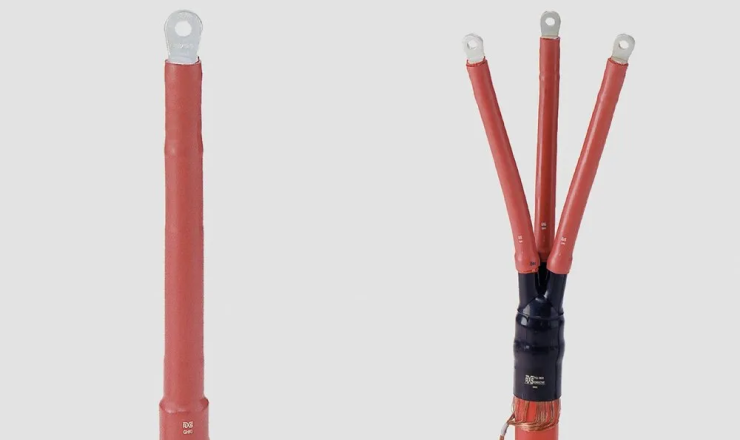- Home
- About Us
- Blog
- Services
- Equipment
- Online Testing
- Offline Testing
- Partial-Discharge
- CPC 100 Multifuncational Switchyard
- Vlf Tan Delta Measurement
- Current Signature Analysis
- Relay Measurement
- CT Measurement
- SFRA Measurement
- Moisture Analysis by PDS & PDC
- Turns-Ratio-Measurement
- Winding Resistance Measurement
- OLTC-DCRM-Measurements
- Frequency Response stray Losses
- Circuit Breaker Analyzer & DCRM Test
- Circuit Breaker Timer
- Contact Resistance Meters
- Particle Count Tester-Pamas
- TRAX Multifunctional switchyard Diagnostic Test
- TESTRANO-600
- Surge Tester-jabbals
- Circuit Breaker Analyzer
- Gallery
- Careers
- Contact Us
Electric Power Cable Testing

A power cable is considered a piece of capacitive power cable testing equipment. Power cables are widely used in all applications under various operational conditions. While utilizing an AC(Alternating Current) power source for high-voltage testing, the power supply size would be vast and difficult to move. In this circumstance, an AC RTS (resonant testing system) is used as a substitution, although the related power cable testing equipmentis bulky.
What Is Meant By Testing Electric Power Cables?
Often, a cable fault can be noticed well before it becomes a genuine concern. A visual inspection of all the cables is a great way to troubleshoot minor faults in the power supply. Testing power cables includes looking for corroded copper, ruptures in the insulation, moisture build-up on the cables or any other possible indications of damage.
Major cable faults can cost a lump some money and result in a life-threatening disaster; thus, ensuring cables and joints are in good condition and allowing cable faults to be located rapidly is essential.
Cable testing to predict and deal with faults is vital, and a wide range of test techniques and equipment can be effectively addressed. These cable testing standards are set for Power Cables systems using Very Low Frequencies. These standards are always followed during the testing procedure of the power cables.
What Are The Different Types Of Cable Tests Performed On Electric Power Cables?
Here are the types of cable tests conducted on electric power cables:
- The persulphate test is performed on copper wires.
- An annealing test is performed on copper wires.
- A tensile test is performed on aluminium wires.
- Wrapping test is performed on aluminium wires.
- A conductor resistance test is performed on all cables.
- Test for the thickness of insulation is performed on all types of cables.
- Measurement of the overall diameter of wires is performe.
Routine tests to be conducted:
- Conductor resistance test – The continuity test (also called low resistance measurement) measures the low resistance of cables, from 1 mΩ to 250 Ω.
- High voltage test – The high voltage test (hipot test) can be conducted using AC or DC(Direct Current). If the high voltage test is carried out using DC,which is then combined with insulation.
- Insulation resistance test – The insulation or high resistance test is always conducted using DC. The insulation test is performed in correspondence with a short-circuit and high-voltage test in DC.
- Phasing Test – The correct phasing of all Low Voltage circuits must be inspected where the cables terminate into fuse bases and where the cables run from one point to another.
Benefits Of Cable Testing
- Faulty cables may cause electrical malfunctions, and the replacement can be significantly costly. The most important reason to test your cables is to ensure they’re damage-free.
- While the cable jacket may appear in good condition, the wire inside might be crushed, bent, or twisted. Testing is less expensive than repair.
- Periodic testing will futureproof the infrastructure.
Our Onsite Testing of Power Cable:
- Capacitance and dissipation factor measurement of the inner insulation by VLF Test
- On-line & Off-line Partial discharge measurements.
During power cable testing, the engineers at Lax Energy Solutions ensure its proper insulation and its operating efficiency. We at Lax Energy Solutions are into extensive power cable testing and offer onsite industrial tests as well.
FAQs
Q1: What is done during cable testing?
- Visual inspection: The testing of cable method is used to identify cracks, damage, corrosion, and damage indicators in the cable.
- Continuity testing: The cable test addresses the discontinuity in the cable.
- Insulation thickness measurement: It determines the insulation thickness gauge, profile projector measurement, thickness of insulation/ sheath, etc.
- Cable shielding integrity test: It detects and evaluates insulation’s resistance to current.
- Bending test:It is used to measure flexibility, durability, and elasticity under stress( power over-load).
- Tensile tests: It is used to identify how much the cable can be stretched.
- Fatigue tests: These wire testing determine the stiffness and maximum- minimum bending measurements.
Q2: What are the benefits of cable testing?
The importance of Cable testing is:-
- romptly identifying the issue,
- It helps to support the overall performance,
- Prevents premature failures,
- These tests and procedures help to meet and comply with the required performance-safety standards.
- Reduces unexpected system failures.
Q3: What is used to test the quality of the cable?
When it comes to CRM test in electrical there are certain specialized instruments such as:-
- A high-voltage tester- The instrument is used to detect if the cable is working properly,
- A time-domain reflectometer (TDR)- This helps to identify troubleshooting issues like breaks, faults, terminators, reflectivity, etc.
- Multimeter- It is used to evaluate important parameters( essential electrical properties) like voltage, resistance, and current flow or charged particles.
Q4: Can I use a multimeter to test a cable?
Yes, a multimeter be used to detect simple wire testing faults like resistance, unbroken electrical wire connections, checking resistance, testing continuity, and short circuits. This electrical tester is not used for high-voltage testing.
